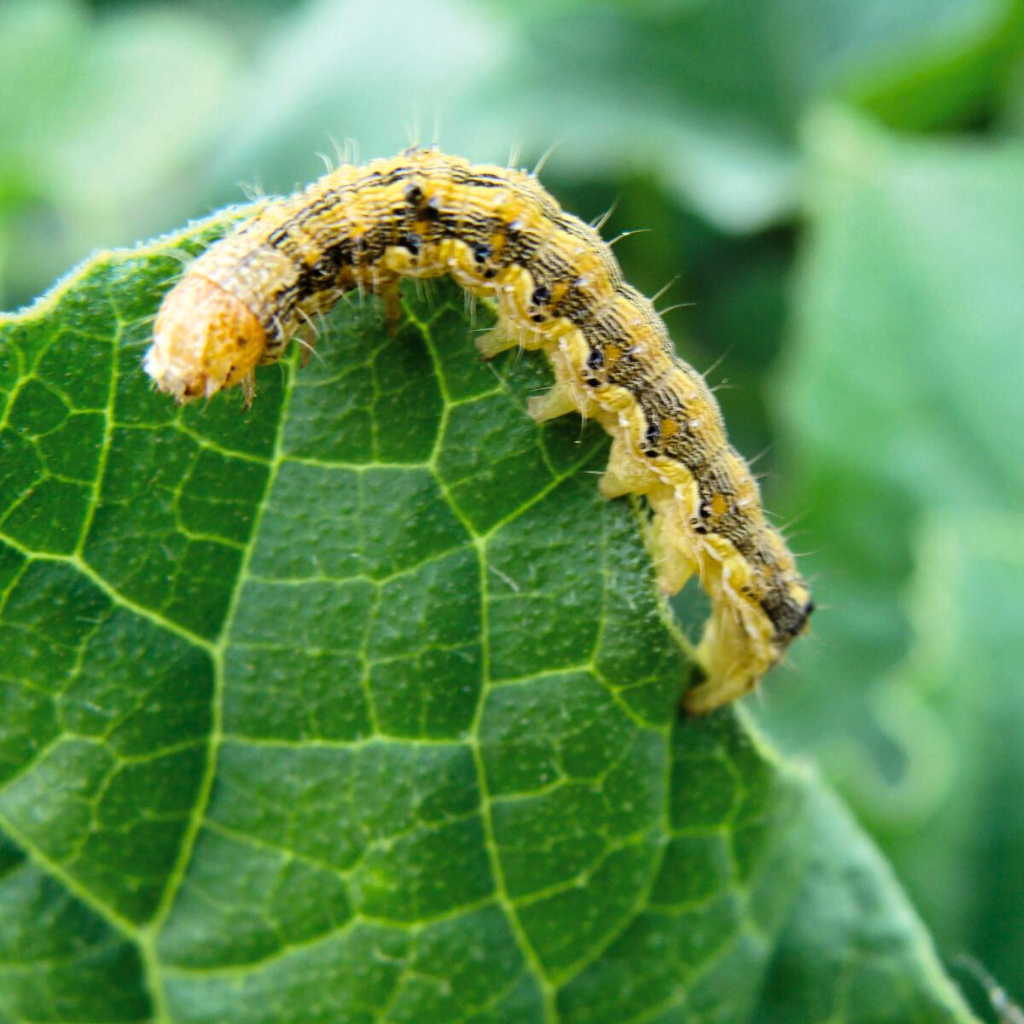



蛀果虫 Helicoverpa
| 分类 | 中文 | English |
|---|---|---|
| 成虫 Adult | 成虫为蛾类,体长约12–20 mm,翅展约30–40 mm。前翅常呈褐色或灰褐色并具不规则斑纹,后翅较浅。夜间活动,趋光且能飞行迁移。 | Adults are moths, body length about 12–20 mm, wingspan about 30–40 mm. Forewings usually brown or grayish-brown with irregular markings; hindwings paler. Nocturnal, strongly phototactic and capable of flight and migration. |
| 卵 Eggs | 卵半球形或扁圆形,乳白或淡黄色,常集中产于叶片背面或群集产于叶面,呈块状或片状覆盖。 | Eggs are hemispherical or oval, milky-white to pale yellow, usually laid on leaf undersides or in clusters/patches on foliage. |
| 若虫 Larvae (Caterpillars) | 幼虫(毛虫)初孵时群集取食,体长1–2 mm;后期独立取食并增长,可达20–30 mm,颜色依种类不同有绿色、褐色或灰色,常具纵向或侧面条纹。幼虫为直接取食害虫,危害叶片、嫩梢、花与果实并可蛀入果内。 | Larvae (caterpillars) initially feed gregariously after hatching (1–2 mm); later become solitary feeders and grow to 20–30 mm. Color varies by species (green, brown, or gray) often with longitudinal or lateral stripes. Larvae are the feeding stage causing defoliation, damage to buds/flowers/fruits, and may bore into fruits. |
| 蛹 Pupae | 幼虫在土壤或植株残渣中化蛹,蛹期不进食,外形为硬壳状,持续期视温度而异。越冬或越春阶段有时以蛹形态存在(视物种与气候)。 | Larvae pupate in soil or plant debris; pupae are non-feeding, with hardened cuticle; pupal duration depends on temperature. Some species may overwinter or overwinter as pupae depending on species and climate. |
生长繁殖 Growth & Reproduction
| 中文 | English |
|---|---|
| 夜蛾类害虫繁殖力强。雌蛾一生可产卵数百至上千粒(视种类而定)。发育速率受温度影响大:在适温条件(约25–30℃)下一代发育历期约25–35天(卵期数天,若虫期约10–20天,蛹期约7–14天)。温室或热带条件下可全年多代发生。 | Armyworm/moth pests have high reproductive potential. A female can lay several hundred to over a thousand eggs depending on species. Development rate is temperature-dependent: at suitable temperatures (~25–30°C) one generation takes about 25–35 days (egg stage a few days, larval stage ~10–20 days, pupal stage ~7–14 days). In greenhouses or tropical areas multiple generations occur year-round. |
种群消长 Population Dynamics
| 中文 | English |
|---|---|
| 种群随季节波动明显:春季气温回升后开始发生,夏季至初秋常为高峰期。若遇适宜气候(温暖、干燥或干旱期後的恢复期)或有大量寄主作物连作,易形成暴发性增长。强降雨、低温或极端高温会抑制其发生。 | Populations fluctuate seasonally: infestations begin in spring as temperatures rise, peaking in summer to early autumn. Under favorable conditions (warm weather, dry spells followed by host availability) or continuous host cropping, populations can build up rapidly. Heavy rains, low temperatures or extreme heat suppress outbreaks. |
生活习性 Habits
| 中文 | English |
|---|---|
| 幼虫昼伏夜出,初孵幼虫多群集取食,后期分散单独取食。幼虫吃食叶片、嫩梢、花和果实,成熟幼虫常钻入果内或在植株基部取食,造成落果、果实腐烂或严重减产。成虫多在夜间活动并有趋光性,雌蛾选择叶面或叶背产卵。幼虫在土中或残渣中化蛹。 | Larvae are nocturnal, hiding by day and active at night; early instars feed gregariously, later instars disperse and feed solitarily. Larvae consume leaves, shoots, flowers and fruits; older larvae may bore into fruits or feed at plant bases, causing fruit drop, rot, and yield loss. Adults are nocturnal and phototactic; females oviposit on foliage/leaf undersides. Pupation occurs in soil or plant debris. |
